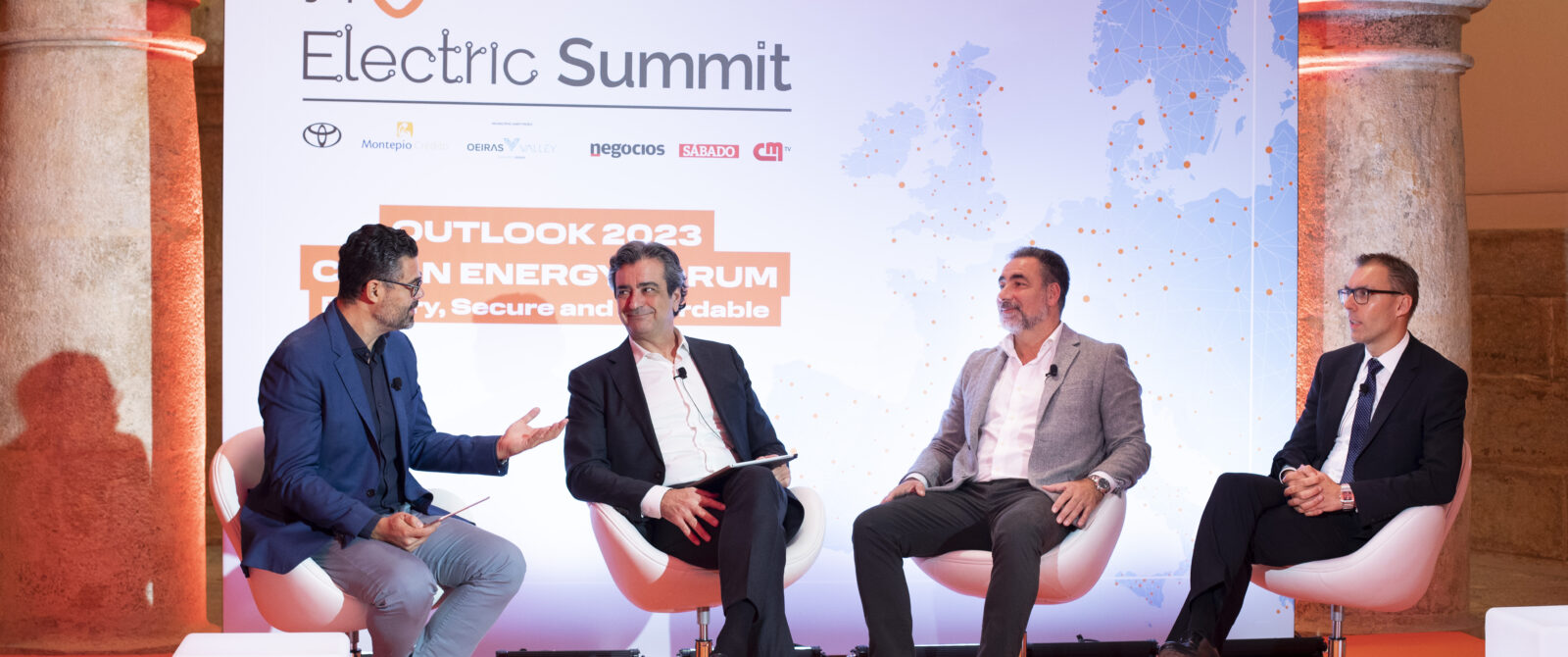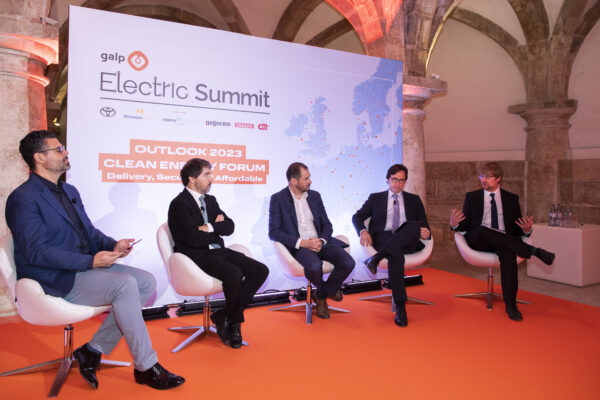Portugal is competitive in solar energy
The Iberian economy stands to make huge gains from the growth of this energy source, since Portugal and Spain are the cheapest in terms of solar power, according to the heads of Galp and international experts in the sector.
The sun will be the main basis for energy transition in the European Union, and will ensure that the 27 Member States will no longer be reliant on Russian fossil fuels. The international speakers at the “Clean Energy Forum Outlook 2023” Solar Energy debate highlighted Portugal and Spain’s advantages in producing renewables, due to the plentiful supply of sun and wind, the reduction in PV panel installation costs and the imperative to invest in solar storage.
Carlos Relâncio, head of Renewables at Galp states that “With solar, we have already won the race in terms of cost, as it’s the most competitive source of electricity in the world. And the reduction in the cost of PV panel installation has been huge, with a reduction in the last nine to ten years of 19% of the total cost.”
Another important factor brought up in the debate was the inextricable link between solar energy and green hydrogen. “When REPowerEU was set, after Russia’s invasion of Ukraine, the intention was to replace part of the fossil fuels with green hydrogen. The only way you can get H2 is through renewable electricity. The two main sources to achieve renewable electricity to produce green hydrogen and then synthetic fuels from biological origin are actually through solar and wind”, added Pedro Amaral Jorge, president of the Portuguese Renewables Association (APREN).
In the European Union, research and innovation are increasingly geared towards solar power. Wolfram Sparber, the vice-president of the Association of European Renewable Energy Research Centers (Eurec) and head of the Institute for Renewables Energy at Eurac Research, spoke about how quickly this energy source has evolved. “I did my Master’s theses on PV (photovoltaic) technology. At the start, a PV system cost around 45,000 euros for a single-family house and I remember talking to people and they would say it was a waste of time. And now we can see where we have arrived, where solar has become the cheapest electricity source.”
Pedro Amaral Jorge, the president of APREN, reminded us how far we’ve come in the last decade. “Ten years ago, a PV system would cost 400 euros per megawatt-hour and in one decade we have come down to an average price per megawatt-hour of 25 to 30 euros. We are now replacing fossil fuels not only because it’s environmentally friendly, but also because it’s economically competitive and now it can lead us to energy independence and security of supply.”
In this race, Portugal and Spain are starting off with an advantage. Pedro Amaral Jorge says “Iberia is the region in Europe which will reap the most benefit because we are the cheapest countries in solar. We can be the most competitive for PV. The REPowerEU targets are achievable. The point is to put the train in motion.”
The oil company Galp is going full steam ahead. As Carlos Relâncio points out, “Three years ago Galp’s presence in renewables was almost zero and today we have 1300 megawatts in operation, which makes us the third biggest solar producer in Iberia. Our target is to have 4 GW or 4,000 megawatts in operation in 2025 and 12,000 MW in 2030, which is very ambitious and will involve a combination of solar and wind projects.”
As an industrial operator, Galp is expanding these projects further afield and next year it will be starting its investments in PV power plants in Brazil.
Storage is key
All three speakers acknowledge that the main limitations on the growth of solar energy are the red tape involved in installation processes, issuing of permits, and storing this energy source – storage is not yet able to meet demand. The ability to store solar for a long time will be key to ensuring that this source of renewable energy can become the main one within Europe.
“Unfortunately, we have faced disruptions, first with covid-19 and then with the war in Ukraine. But we believe storage is a must. We can’t have more than 50 to 70% of intermittent generation of solar. In the next two or three years, all plants will come with storage. It’s the only way to continue on the path towards the electrification of the economy.” This is according to Carlos Relâncio, of Galp, a company which is positioning itself as a “long-term investor” in this marathon.
He further pointed out the “new legislative package approved in Portugal” which accelerated the installation of photovoltaic systems. “Now, when Galp instals a PV plant, five days later it is injecting electricity into the grid. In Spain, the minimum period for this is two months. We have to be proud of our legal framework and complement it with interconnection of renewables to the system.”
APREN’s Pedro Amaral Jorge explains that in Iberia we have three storage mechanisms that we can use. “One is hydro dams, which is a system which uses water to store energy, another is green hydrogen and the third is batteries.” This duration of this capacity to store energy will depend upon the means used. “There will be times when we have an imbalance for three minutes, other times for three hours or three days. And for each of these instances we will need a different storage technology: the shortest times will be supplied by batteries, the mid-term by hydro and the long storage needs to be achieved through green hydrogen or synthetic fuels of biological origin.”
Wolfram Sparber adds that the Eurecs are working on storage simulations in order to understand how the transition will work and how many batteries will be required in the different types of installations. He uses this example: “What we see in these models is the need to make use of batteries which come in cars. If we decarbonise the transport sector, we’re going to have access to huge batteries, much larger than home batteries – if you have an electric car you have a battery eight times that size in your garage, and you don’t pay for that battery because it’s included in the price of the car.”
“You have the possibility to do smart charging of your car battery. In other words, the customer is going to charge his car when electricity is cheap.”
Within this context, Sparber concludes that “it makes a lot of sense” for Galp to be investing in renewables but also in charging infrastructures.
Investment and European funds
All renewable energy funding in Iberia comes from private investment. “The only thing that the Government needs to do is create a stable regulatory framework. European funding will have to go towards technology because banks don’t yet believe in it, so we need this guarantee, and funds can also be used to reach net zero targets in 2050. There are actually conversations now about how funds from the Resilience and Recovery Plan (RRP) can be channelled towards solar”, said Carlos Relâncio of Galp.
Wolfram Sparber states that, in his experience, “European money helps a lot with applied research, in innovation in technology”. He adds that what is needed is to “speed up permitting and bureaucracy in installation processes.”
On the same subject, Pedro Amaral Jorge of APREN adds that we “can’t look at licencing through the same lens as we did five or ten years ago. And we need to involve municipalities in this, because our wind farms and our power stations for PV aren’t going to be installed in Lisbon.”











